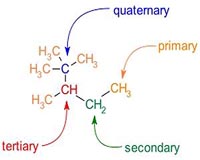 |
Oslo, Norway (SPX) Apr 06, 2011 CO2 capture by means of amines is considered to be the most appropriate method to quickly begin with CO2 removal. During this capture process, some of the amines escaping the recycling process will be emitted into the air and will also form other compounds such as nitrosamines and nitramines. The Norwegian Institute of Public Health (NIPH) was commissioned by the Climate and Pollution Agency (Klif) to assess whether these new emissions are harmful to health - particularly in terms of the cancer risk to the general population. The results of the risk assessments were submitted this week. These amines by themselves are not very harmful at typical concentrations that might occur, for example, near power plants. However, the amines could take part in complex chemical reactions and form new compounds such as nitrosamines and nitramines, which can affect health and the environment. There is relatively little knowledge about the various health effects for many of these compounds, but it is known that several of them can be highly carcinogenic. The cancer risk ultimately depends on how much is formed, how much is released, how much is decomposed in the atmosphere by light and how strong the cancer-causing substances are. The NIPH has assessed the cancer-causing ability of compounds that can be formed in connection with CO2 capture. Nitrosodimethylamine (NDMA) was found to be one of those that may be the most carcinogenic. Therefore, this compound is used to calculate the risk from the total amount of various nitrosamines in the air.
Uncertainty about nitramines However, studies show that the nitramine we know most about, (N-nitrodimethylamine) is a highly carcinogenic substance, although it is not as potent as NDMA. The NIPH recommends that the risk estimate for NDMA is also used for nitramines. This must be regarded as a risk estimate that will provide good protection of the population. If nitramines are detected in significant quantities in emissions, there will be a need for more knowledge for the NIPH to be able to perform a full risk evaluation.
Recommendation The NIPH therefore concludes that the total amount of nitrosamines and nitramines should not exceed 0.3 ng/m3 (nanogram/m3) air.
Share This Article With Planet Earth
Related Links Norwegian Institute of Public Health Carbon Worlds - where graphite, diamond, amorphous, fullerenes meet
 New Method For Preparation Of High-Energy Carbon-Carbon Double Bonds
New Method For Preparation Of High-Energy Carbon-Carbon Double BondsChestnut Hill MA (SPX) Mar 28, 2011 A new catalytic chemical method for the synthesis of a large and important class of carbon-carbon double bonds has been developed by scientists from Boston College and MIT, the team reports in the journal Nature. The findings substantially expand the versatility of a set of metal-based catalysts discovered only three years ago by the researchers. With molybdenum at their core, the ca ... read more |
|
| The content herein, unless otherwise known to be public domain, are Copyright 1995-2010 - SpaceDaily. AFP and UPI Wire Stories are copyright Agence France-Presse and United Press International. ESA Portal Reports are copyright European Space Agency. All NASA sourced material is public domain. Additional copyrights may apply in whole or part to other bona fide parties. Advertising does not imply endorsement,agreement or approval of any opinions, statements or information provided by SpaceDaily on any Web page published or hosted by SpaceDaily. Privacy Statement |